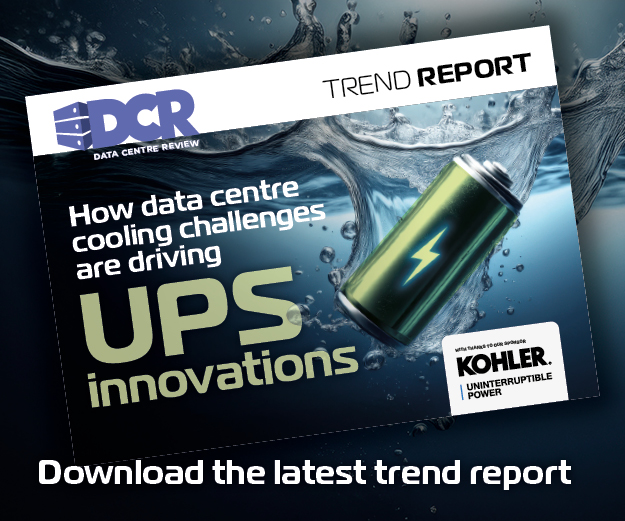The global data centre industry is one of the fastest growing technology-driven industries. With emerging digital technologies, such as artificial intelligence (AI), data analytics, virtual reality, IoT and advanced cloud services, one could say the industry is riding a wave of high-performance computing (HPC).
However, despite being essential and growing in number, data centres are often seen as inflexible, energy-sapping, environmentally unfriendly, and misaligned to the future needs of most businesses. Data centres are necessary for digital economies, yet they continue to deal with significant challenges regarding high energy and water consumption, floorspace, access to (renewable) energy, cooling costs, complexity and cost of build. With the rising costs and scarcity of energy, these challenges are becoming even more urgent.
A global challenge
With sustainability being a key goal for the data centre industry, cooling has been brought under sharp scrutiny. On a global scale, 3% of all electricity used in the world goes to data centres, using energy for IT and cooling. Each data centre consistently churns out warm air which is too low in temperature to efficiently distribute and transport.
Changing the common cooling medium of air for a much more efficient medium is changing everything for data centres. Innovations in cooling address the data centre global challenges, preparing them for a sustainable future of high density and performance hardware and facility efficiency anywhere.
One of these innovations, liquid cooling, is gaining more and more interest – led by HPC and servers optimised with a large number of co-processors for AI applications. With reliability and energy efficiency being key for data centres when choosing thermal management systems, choosing liquid cooling, and more specifically immersion, ensures easy integration and proven sustainable performance.
When the average global PUE is roughly 1.6, and immersion cooling can reduce that to below 1.1 with ease, there is no better efficiency approach than immersion cooling in today’s market. Immersion cooling technology actively helps data centre operators fulfil their sustainability goals, as using this approach makes it possible to reduce their energy footprint by up to 50%.
High expectations for high performance
The market for high-performance cooling systems has grown exponentially, and this is exemplified in the latest report from Uptime Institute. Cooling technology is imperative to HPC operations, but choosing the right technology depends on a number of different factors, such as server density, cost, facility power consumption and data centre infrastructure.
Previously, data centre operators may have seen immersion as being a tricky choice due to concerns about maintenance, but with offerings that include expert commissioning and servicing, as well as innovative add-on solutions, such as service trolleys, maintaining an immersion system is simple and efficient.
Immersion cooling can deliver the highest performance and lowest PUE, and with successful deployments, such as the HPC cluster in Amsterdam, immersion is shown to meet cooling demands on both a system and server level.
Ultimately, immersion is seen as the most promising technology from a performance perspective, and with space being vital to HPC set ups, adopting this technology helps data centre operators reduce the physical footprint of their cooling infrastructure by up to 80%. Moreover, the ability of the liquid to capture all the IT energy combined with warm water cooling enables solutions ready for heat reuse.
Next steps
Liquid cooling is changing the way we design, build, and operate data centres, and in the coming years the data centre industry is set to see more of a shift from air cooling to liquid cooling. Other innovations, such as cold plates, for example, are great for static environments, supercomputers, and so on, but single-phase immersion cooling is the logical choice when looking for environmentally-friendly and scalable solutions.
With that said, the reality is that this method of cooling is mostly being applied in existing data centres, and retrofitting immersion cooling in a facility which already has the investment and infrastructure in place will mean the impact of immersion cooling will be slower. On the other hand, greenfield data centres that have been designed and optimised for immersion cooling can see their CapEx and OpEx overheads cut by as much as half. With cost being identified as one of the main barriers to the sustainability agenda, data centre operators cannot ignore the long-term benefits.
Realistically, a hybrid form of cooling for data centres is the likely scenario moving forward. Colocation providers, the largest part of the market, may not be at the stage where they’re willing to invest big on immersion cooling, but these facilities have their sustainability roadmaps to consider as well as next-generation hardware – CPUs and GPUs – which are set to increase the need for cooling even further.
Ultimately, as the importance of data centres to the global economy and society grows, concern about energy use and environmental impacts will grow too. In response, a mostly voluntary compendium of data centre sustainability standards and requirements has been created. Dedicated data centres will be doing their research and figuring out how best to implement more sustainable cooling solutions into their facilities.
One of the big drivers for data centre cooling progress is the emphasis on new standards and regulations, particularly in Europe.
The Sustainable Digital Infrastructure Alliance (SDIA) continues to do great work in laying down a roadmap for the environmental side of the industry, and immersion cooling can help hit many of the markers on that roadmap. Within the next few years, as more facilities embrace this technology, the industry is set to see more evidence of this.



